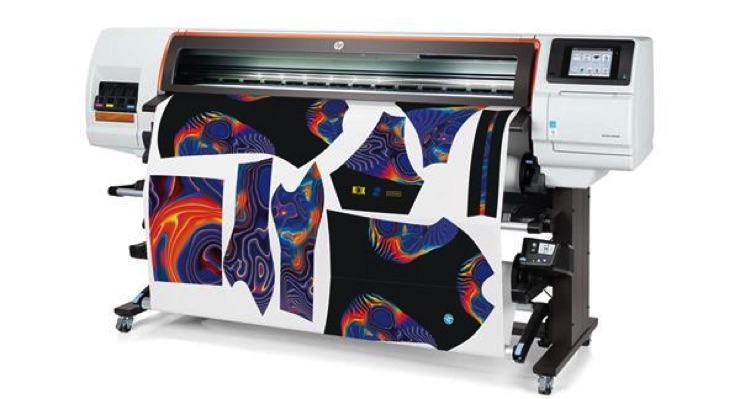A Comprehensive Guide to the Different Kinds Of Towel Printing Methods
Starting an exploration of cloth printing methods reveals a remarkable intersection of tradition and innovation. Each technique, from the careful workmanship of block printing to the fast performance of display printing, serves unique purposes and provides distinctive advantages. Digital printing's flexibility and environmental consciousness stand in raw contrast to the speedy modification of warmth transfer printing. Color sublimation printing astounds with its capability to generate vivid, long-lasting designs on synthetic materials. To genuinely grasp the nuances and potential applications of these varied methods, a much deeper investigation is important.
Block Printing
Block Printing, among the oldest techniques of fabric design, has a rich history that dates back to old people. Coming from China around 220 A.D., this technique later spread to India and at some point Europe. The process entails carving detailed layouts right into wood blocks, which are then dipped in color and pushed onto material to develop patterns. This technique is remarkable for its capacity to generate highly described and repeated designs.
The precision and workmanship included in block printing make it a labor-intensive procedure, yet it also enables for a high degree of modification. Artisans can create one-of-a-kind patterns by combining various blocks or varying the application of color. This adaptability has actually contributed to the long-lasting appeal of block printing in both traditional and modern textile design.
Block printing is specifically valued for its visual qualities, including the mild variations in pattern and color that arise from the hand-printing procedure. These flaws provide a distinct personality to every piece, identifying it from mass-produced textiles. Despite developments in contemporary printing modern technologies, obstruct printing stays a valued strategy, celebrated for its historical value and artistic worth.
Screen Printing
Display printing, one more prominent textile decor technique, has transformed the market with its performance and flexibility. This method entails creating a pattern, referred to as a screen, and utilizing it to use layers of ink on the printing surface area. Each shade in the style needs a separate screen, which enables vivid and elaborate multi-colored prints.

One of the essential advantages of screen printing is its flexibility to different kinds of textiles, consisting of cotton, polyester, and blends. This strategy is specifically suitable for large-volume orders as a result of its cost-effectiveness and speed. The toughness of the prints is one more considerable benefit, as the ink bonds well with the textile, making certain resilient designs that endure several laundries.
Once dried out, the design is transferred onto the emulsion-coated display using a UV light source. Ink is then pressed via the pattern onto the material utilizing a squeegee.
Display printing is extensively used in the fashion business, promotional items, and custom apparel. Its capability for high-grade, thorough prints secures its status as a foundation technique in fabric printing.
Digital Printing
Digital printing has actually quickly become an advanced technique in the textile industry, leveraging advanced technology to produce high-resolution layouts directly onto fabric. Unlike traditional approaches, electronic printing uses inkjet go to this site printers to down payment pigment or dye-based inks onto textiles, making it possible for detailed and vibrant patterns with an exceptional level of detail and shade precision.
One of the main benefits of electronic printing is its versatility. This method enables for on-demand printing, which dramatically decreases waste and minimizes supply expenses.
In addition, electronic printing is eco-friendly. sublimation printing. It uses water-based inks and needs much less water and energy contrasted to standard methods, straightening with lasting methods. The accuracy of digital printing also permits the use of a bigger variety of fabrics, including cotton, silk, polyester, and blends, making certain adaptability across numerous applications
Warm Transfer Printing
Exactly how does warmth transfer printing reinvent material design? Heat transfer printing entails making use of warmth and stress to transfer a layout from a specifically created paper onto textile.
Among the primary benefits of heat transfer printing is its capability to produce top notch, thorough pictures swiftly and successfully. It is especially fit for tiny manufacturing runs and custom-made orders, making it a popular choice for customized apparel and promotional products. Furthermore, this strategy is flexible, suiting numerous kinds of materials consisting of cotton, polyester, and blends.
Furthermore, warmth transfer printing is reasonably cost-effective compared to other approaches, as it requires minimal setup and reduced initial investment - DTF printing. This cost, combined with its capability for producing lively, long lasting prints, emphasizes its pivotal duty in modern-day textile style

Dye Sublimation Printing
Dye sublimation printing, a sophisticated textile printing strategy, offers unparalleled vibrancy and long life for styles on different artificial materials. The printed transfer paper is then put on the textile, and both are subjected to high heat and stress using a heat press.
One of the vital advantages of color sublimation printing is its capability to generate continuous-tone prints with elaborate information and vibrant colors. Unlike other printing approaches, the color ends up being part of the textile rather than sitting on top of it, resulting in a soft and breathable coating.
Final Thought
Block printing is prized for its artisanal high quality, while screen printing more is helpful for high-volume manufacturing. Digital printing gives flexibility and environmental advantages, whereas heat transfer printing is excellent for fast customization.
Each technique, from the thorough craftsmanship of block printing to the fast performance of screen printing, offers one-of-a-kind functions and offers distinct advantages. Digital printing's adaptability and ecological consciousness stand in raw contrast to the speedy personalization of warmth transfer printing. In spite of advancements useful reference in modern printing modern technologies, block printing remains a cherished method, celebrated for its historical relevance and artistic worth.
Dye sublimation printing, an innovative textile printing method, provides unmatched vibrancy and long life for layouts on various artificial materials. Digital printing supplies adaptability and environmental advantages, whereas warmth transfer printing is perfect for fast modification.
Comments on “The Best Guide to Sublimation Printing for Customized Garments”